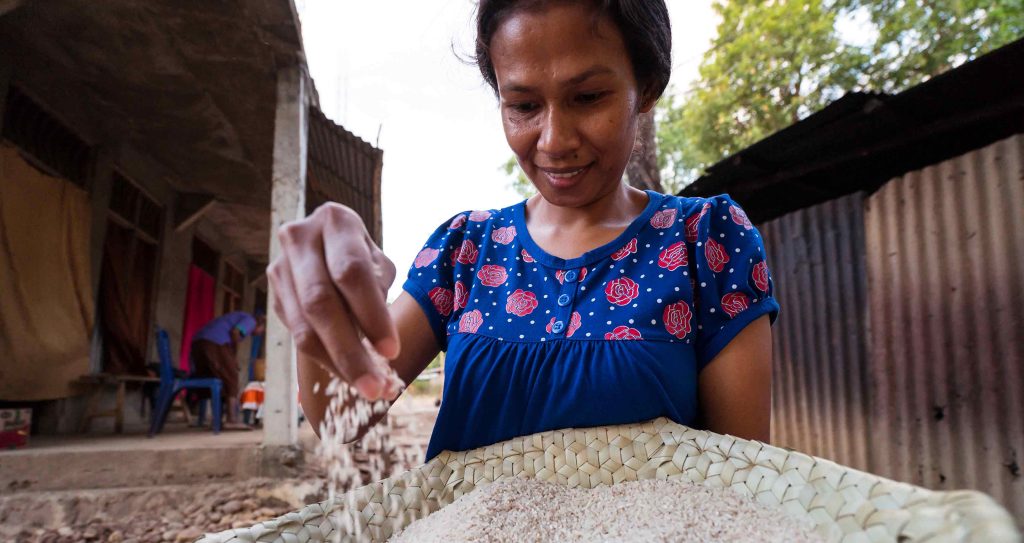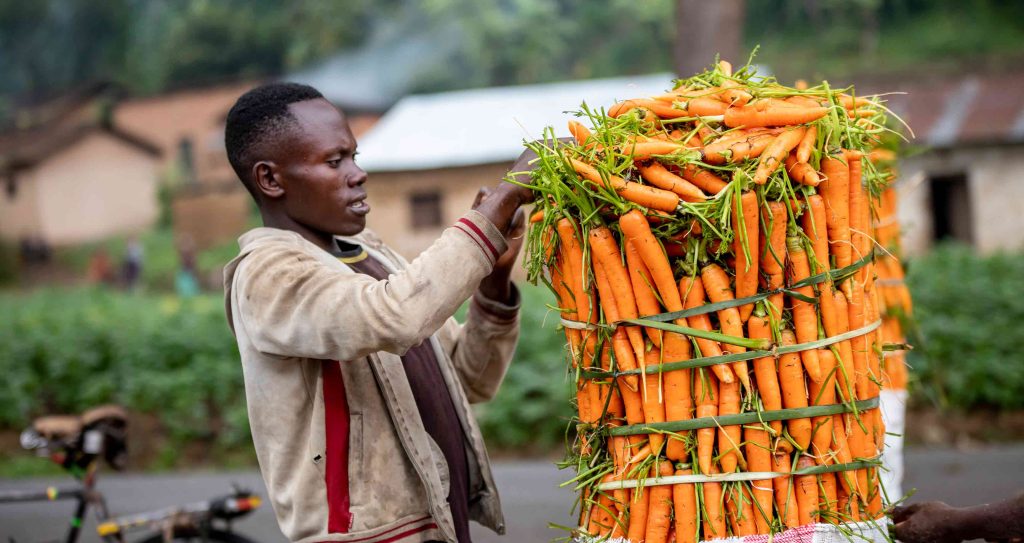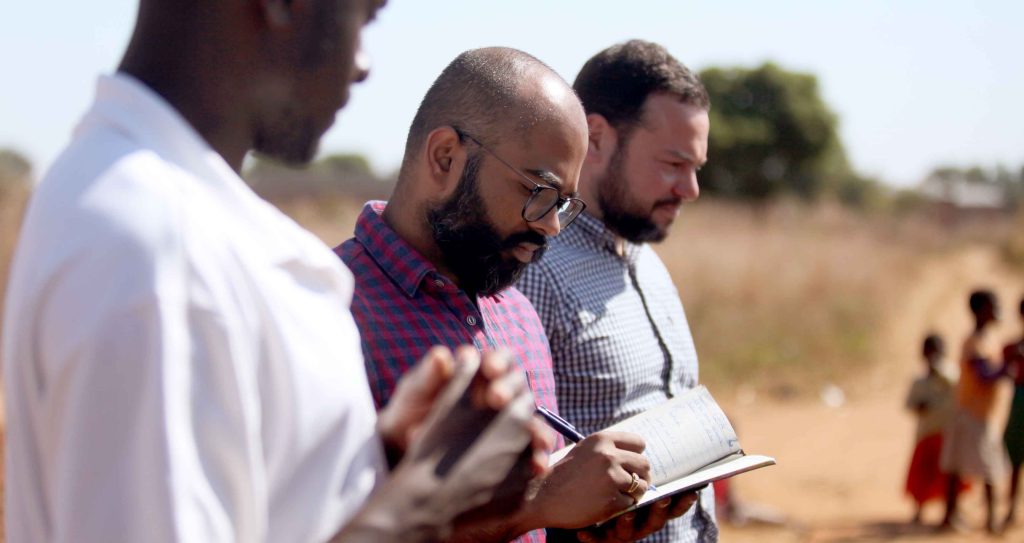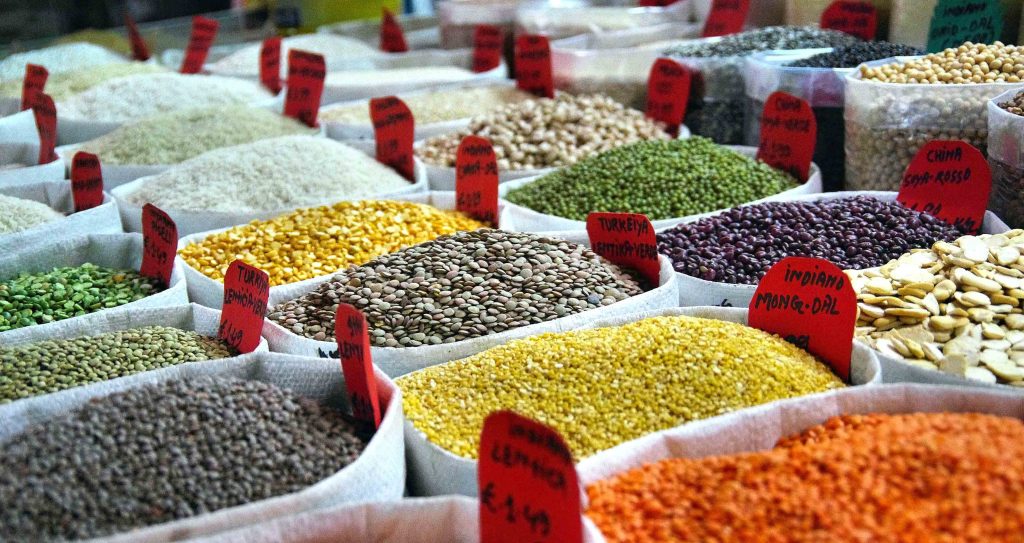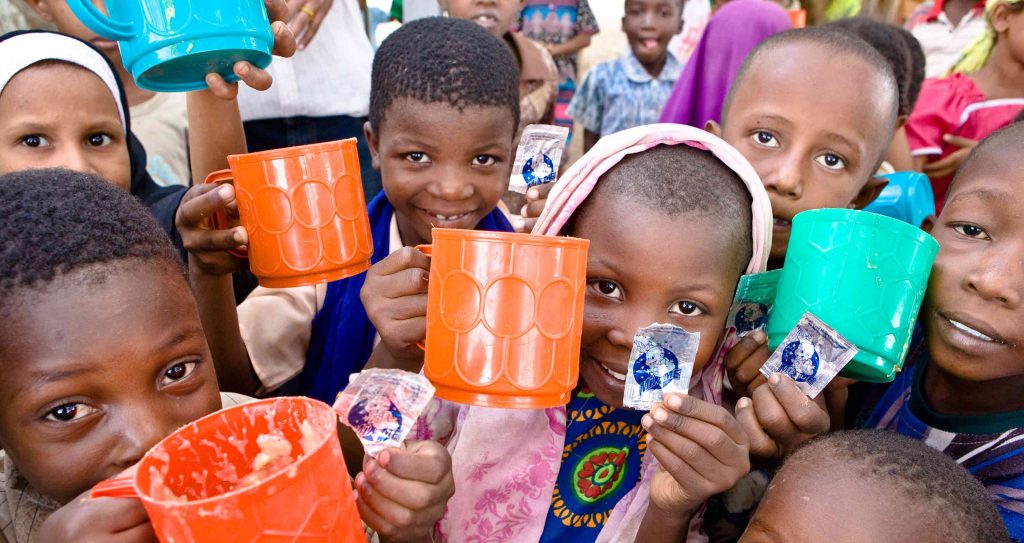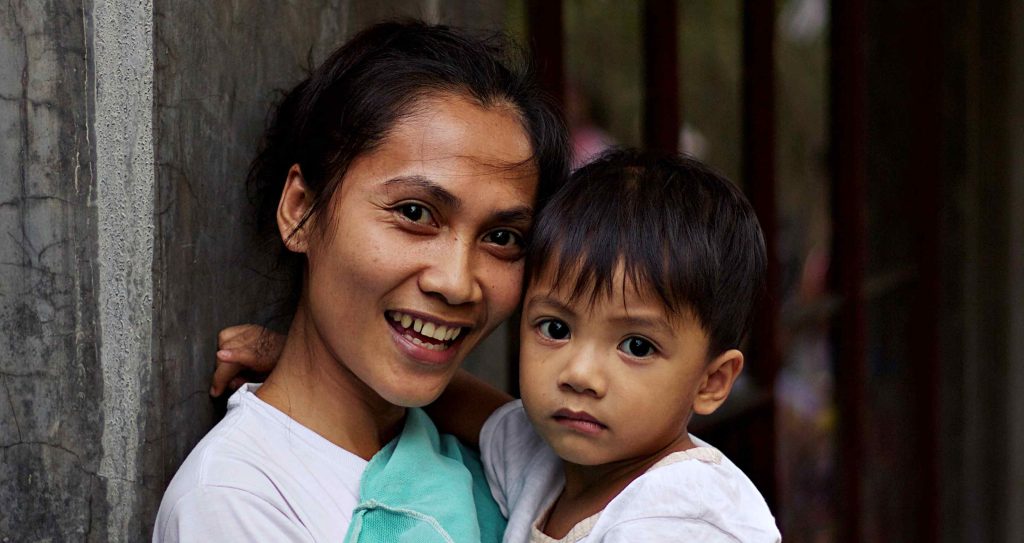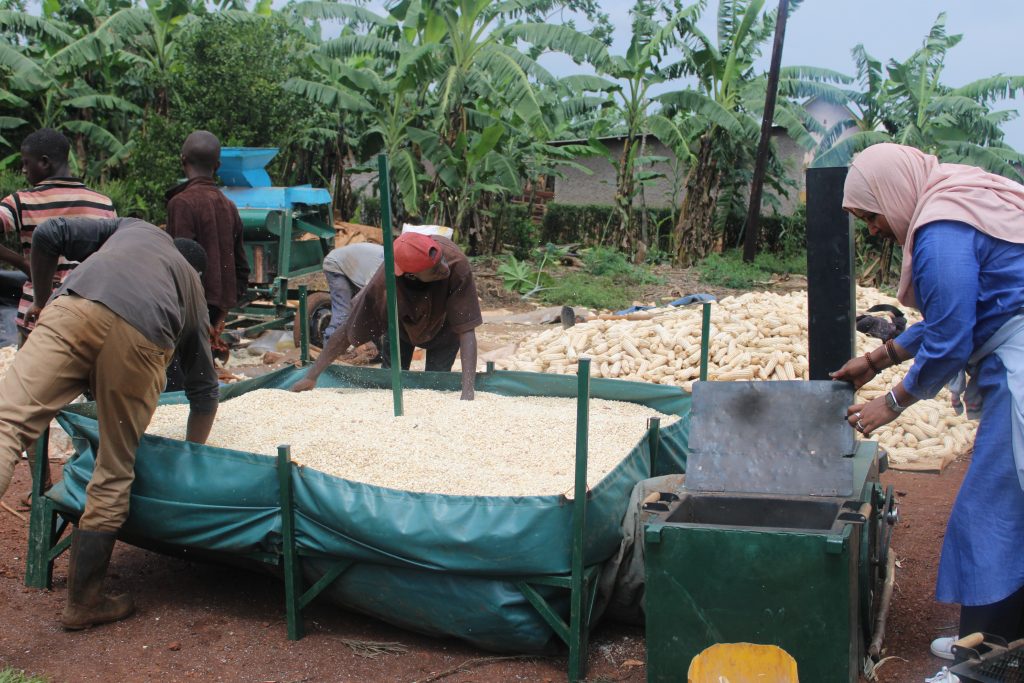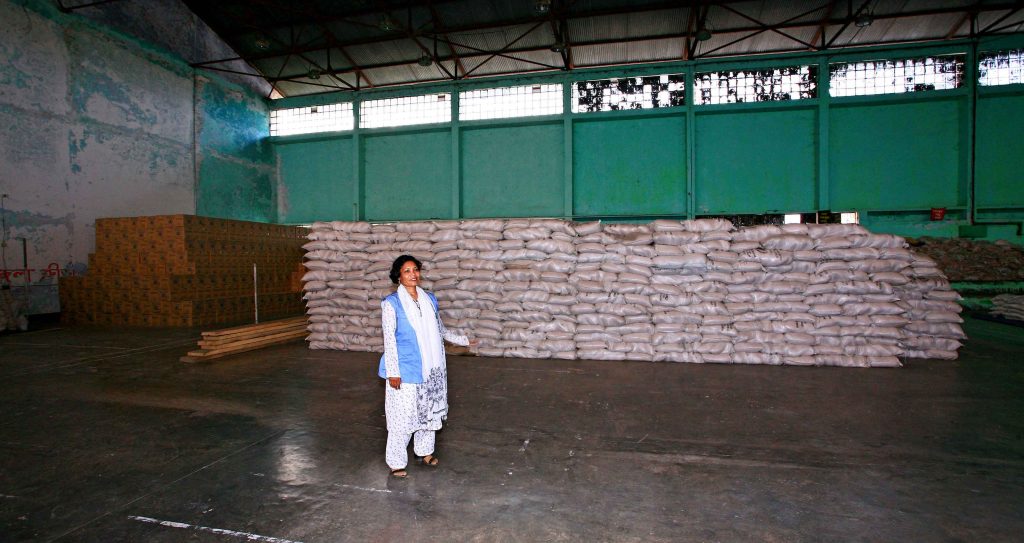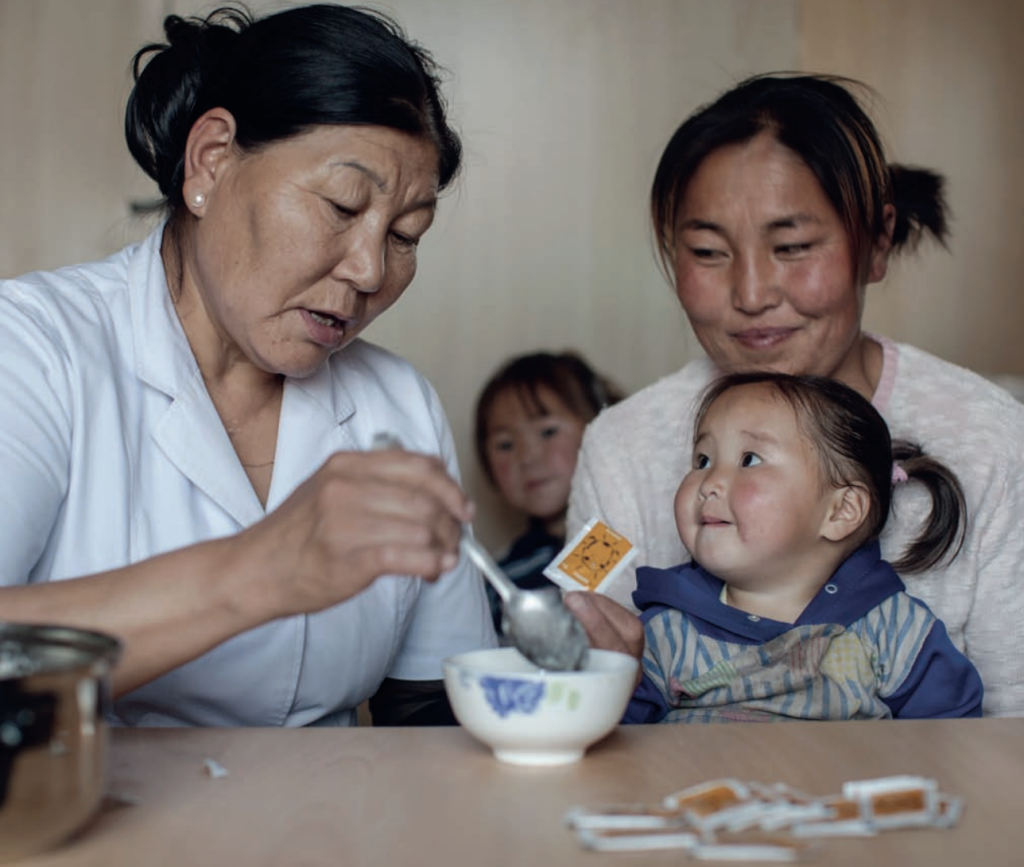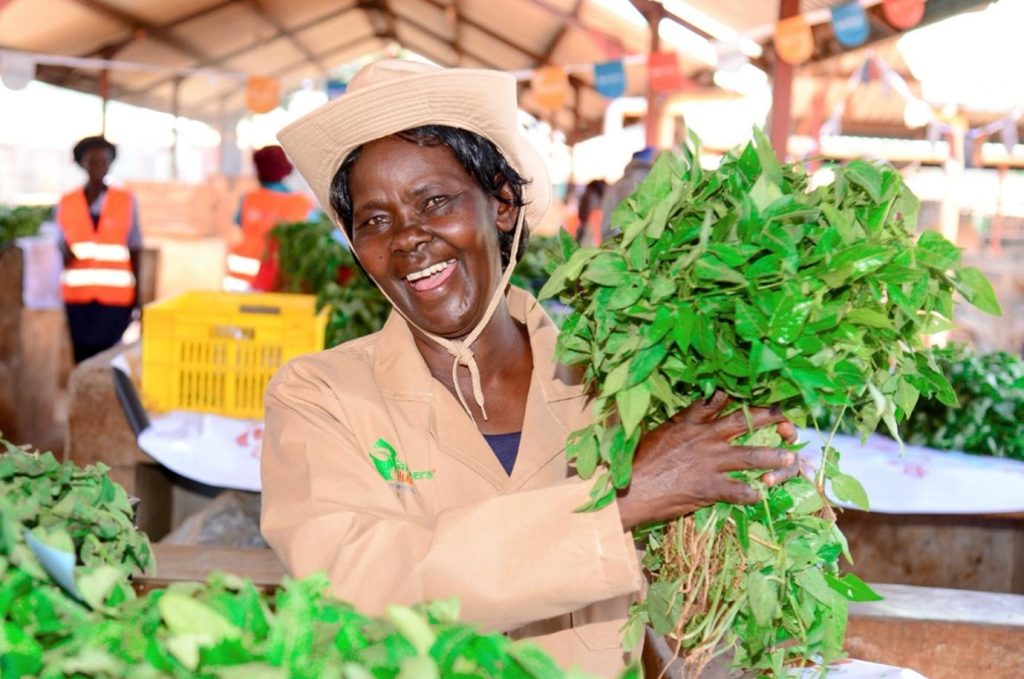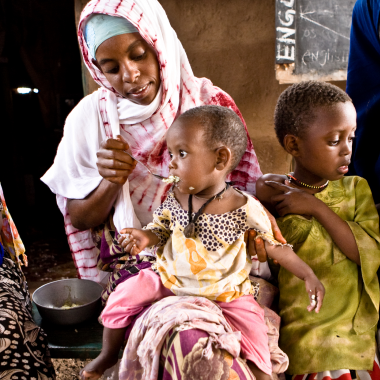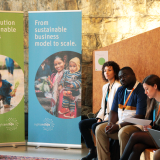Improving Food Safety in Rwanda

Our local office in Kigali is working to improve maize value chain efficiency and reducing aflatoxins in the country’s staple crop
Aflatoxins are carcinogenic byproducts produced by common fungi that grow on grains and other crops, especially maize and groundnuts. They present a serious public health risk in many tropical developing regions and hinder the development of both domestic and international food and feed markets.
Since 2022, we have, through our local office in Kigali, enhanced pre- and post-harvest practices of maize by promoting regular testing, proper drying techniques, and training for key actors in the value chain, including farmers and regulators. In many developing regions such as Sub-Saharan Africa, markets generally do not incentivize the reduction of aflatoxins in crops because contamination and its associated risks are difficult to detect at the subnational level.
Given that the molds responsible for aflatoxin production are influenced by multiple factors and must be managed throughout the entire value chain, from production to consumption, Sight and Life’s (SAL) strategy in Rwanda focused on facilitating cost-effective and field-friendly diagnostic equipment for aflatoxins detection.
Engaging with farmers through their cooperatives in the Eastern Province, SAL has addressed the challenges of aflatoxin mitigation by offering end-toend solutions. These include training farmers to use moisture meters to
accurately measure the moisture content of their maize and teaching them how to utilize available drying technologies to ensure maize is dried to 13.5% before storage. The training provided to cooperatives on aflatoxin
management has proven valuable, and a manual on best practices serves as a handy reference for them.
In collaboration with government regulatory agencies, including the Rwanda Food and Drugs Authority (FDA) and Rwanda Inspectorate Competition and Consumer Protection Authority (RICA), SAL introduced user-friendly, field-appropriate testing equipment to complement the regulators’ advanced HPLC systems. This rapid testing tool delivers results within 10 minutes, from sample preparation to completion, and is suitable for use in the field. Its ease of use makes it accessible to anyone who has received training.
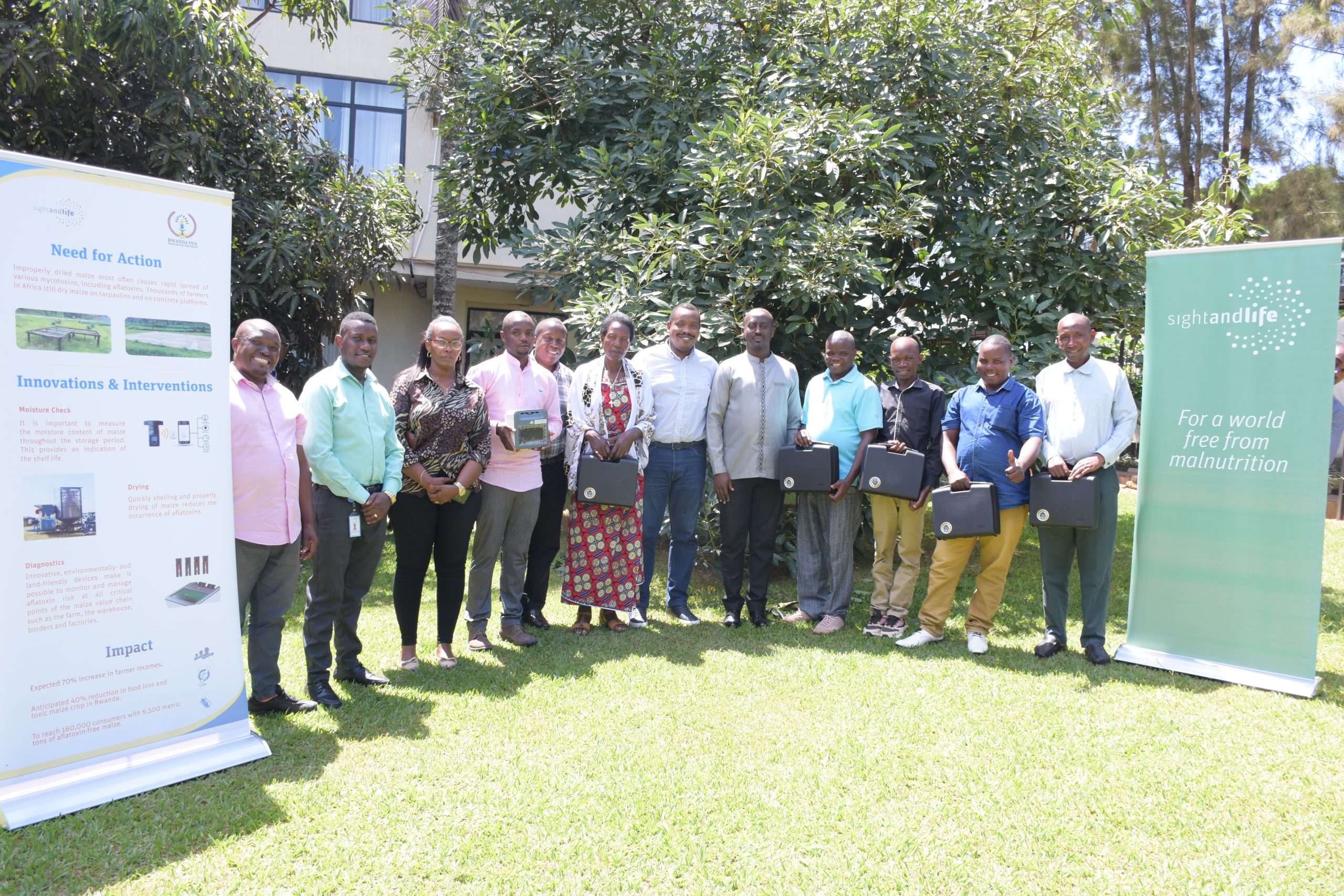
Research reports
The following research reports have insights into the Rwanda maize value chain:
1.Baseline Survey:
The survey explored farmers’ knowledge and practices regarding aflatoxin contamination in maize. It highlighted that while many farmers are aware of the negative impacts of aflatoxins, there is a general lack of awareness about aflatoxins and other mycotoxins.
2. Aflatoxin Manual:
This manual serves as a comprehensive guide on aflatoxin contamination, focusing on causes, detection, and management strategies. It covers the various factors influencing aflatoxin proliferation, such as environmental conditions and agricultural practices, and provides detailed methods for detecting aflatoxins in crops. The manual also outlines best practices for preventing contamination, such as proper drying and storage techniques.
3.Standardization of Agravision Pro:
This publication discusses the development and standardization of Agravision Pro, a rapid diagnostic tool that detects aflatoxins and other mycotoxins in 10 minutes. This tool can be used to monitor many commodities including maize. It outlines the methodology used to ensure consistency and reliability in detecting aflatoxins, as well as the benefits of using such technology to uphold food safety standards.
4.Maize Value Chain Assessment: This assessment examines the Rwanda maize value chain, focusing on aflatoxin contamination at different stages, from production to consumption. It identifies critical points where aflatoxin contamination is likely to occur and suggests interventions to mitigate risks. The review emphasizes the importance of stakeholder collaboration, including farmers, traders, and policymakers, to implement effective control measures and improve food safety standards.
Discover more
Why tackle malnutrition
Understand how malnutrition affects our collective future
Global footprint
Discover our key projects across the world
Our strategy
Learn about our 3-stage plan to deliver direct impact on the ground
Our impact
Learn about the impact we have made on the ground so far all these chnages are in discover more section


